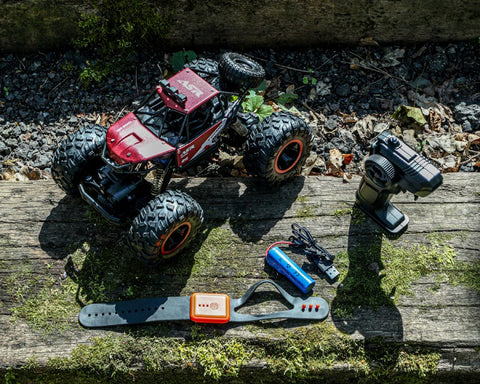Drone popularity is growing with well over a million drones sold worldwide in the past year. It has resulted in a whole host of exciting new uses from search and rescue to aerial agriculture, on top of an ever-growing collection of fantastic videos. But UAV's have also been used for less noble goals. Drones were employed to smuggle contraband into prisons and we are seeing the news reporting near misses at airports across the country all too frequently. We look at what authorities are doing to warn, limit or even ground drones in unauthorized situations.
Heed the warnings
DJI were one of the first to integrate 'no fly zones' into their craft, restricting flight in sensitive areas such as airports worldwide. They have expanded the geofencing ability of their inbuilt guidance systems with Warning Zones and Authorization Zones. Beyond this, authorities are now publically reminding pilots where they should not be flying. The FAA (US aviation authority) felt the need to advertise the 32 mile no-fly zone during game-time around the Super Bowl stadium in Santa Clara. The below video suggesting pilots 'leave their drones at home'. https://www.youtube.com/watch?v=Ax8q-gHZf88 They are also using it as a chance to publicize their 'B4UFly' smartphone app that 'helps unmanned aircraft operators determine whether there are any restrictions or requirements in effect at the location where they want to fly'.How do authorities plan to stop drones?
Last year, Battelle's 'Counter UAV Beam Rifle' named 'Drone Defender' was big news. The gun fires radio-beam which reportedly freezes the UAV and disables drone operators’ commands and signals, but little detail is shared upon how this is achieved. The video below shows an operator apparently coaxing a Phantom into landing. https://www.youtube.com/watch?v=d9Zvpx9fFsM Japanese authorities have employed a 6-rotor interceptor drone carrying a 3m-by-2m net which aims to snare another drone. Taking another angle on the situation, a company based in the Netherlands have a 'a low tech solution for a high-tech problem'; They have been training birds of prey to take down drones. In the video below an eagle is seen picking a phantom-clone out of the air and flying away with it. With eyesight estimated to be 4 to 8 times stronger than the average human, the birds could theoretically spot a drone several kilometers away. https://www.youtube.com/watch?v=HifO-ebmE1sThe future of drone flight in the UK
Advances in technology often outpace relevant adjustments to the law. At the moment you are free to own and fly a drone but with incidents such as those mentioned about, this could change. Since December 2015, anyone in the USA owning a drone between 250g and 25 kg must register with the Federal Aviation Administration's Unmanned Aircraft System (UAS) registry before they fly outdoors. People who do not register could face fines up to $250,000 and/or 3 years in prison. The FAA say nearly 300,000 drones have been registered so far, encouraging pilots with a rebate on the fee for the first month. Other countries are doubtless watching to see how successful this system is, before taking steps of their own. We feel the future freedom of drone flight is down to the actions of pilots today.What can I do to fly safe?
We recommend RUSTA's CAA approved Remote Pilot Certificate courses for anyone considering any aerial work; Liability insurance is also a must. At the same time, we realise that for many this may never get beyond a hobby level, and for many an expensive course may be out of the question. Thankfully the CAA has a whole selection of educational material available to aid uk-based pilots, for instance this introductory video. The points of importance are:- Make sure you can see your drone at all times and don't fly higher than 400 feet
- Always keep your drone away from aircraft, helicopters, airports and airfields
- Use your common sense and fly safely; you could be prosecuted if you don't.
- Drones must not be flown within 50 metres of people, vehicles, buildings or structures, over congested areas or large gatherings such as concerts and sports events.
What are your thoughts?
Do you have an opinion on the FAA system or potential regulation in the UK? Have you witnessed irresponsible flying? Do you think pilots should be allowed to make their own minds up? We are interested in hearing your opinions and experiences, leave us a comment below.-

-

-

-

-

-

-

-

-

-

-

-

-

-

-

-

-

-

-

-

-

-

-
 reviews
reviewsAxial SCX10 II Jeep Cherokee Scale Crawler Review : Does it live up to its reputa...
Tom Begley | -

-

-

-

-

-

-

-

-

-

-

-

-

-

-

-

-

-

-

-

-

-

-
 tutorial
tutorialMavic 2 & DJI Goggles : The ultimate pairing in filming, inspections & surveys
Tom Begley | -

-

-

-

-

-

-

-

-

-

-

-

-

-

-

-

-

-

-
 reviews
reviewsFrSKY's Taranis Q X7 Transmitter - A budget alternative to the Taranis Plus X9D?
Tom Begley | -

-

-

-

-

-

-

-

-

-

-

-

-

-

-

-

-

-

-

-

-

-

-

-

-

-

-

-

-

-

-

-

-

-

-

-

-

-

-

-

-

-












































































































